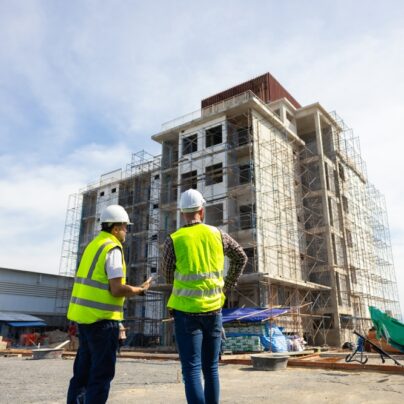It’s a vital aspect of ensuring the safety of construction sites, and as safety personnel know, they understand the importance of evaluating both the advantages and disadvantages. So, let’s embark on this journey together.
Let’s find out and delve into the world of writing risk assessments using software.
The Pros:
Efficiency:
Using risk assessment software in construction can significantly boost efficiency. It helps streamline the process, reducing the time spent on paperwork and documentation. This efficiency can translate to more time spent on the actual safety measures.
Example: Imagine you’re overseeing a complex construction project with multiple teams. Software can help you quickly generate comprehensive risk assessments for each phase, saving you hours of manual work.
Consistency:
Software ensures a standardised approach to risk assessment. It follows pre-set guidelines and regulations, reducing the likelihood of errors or omissions. This consistency is crucial for maintaining a safe working environment.
Example: When assessing fall risks, risk assessment software can prompt you to consider common hazards like unguarded edges, fragile roofs, or unsecured ladders, ensuring nothing is overlooked.
Data Analysis:
Risk assessment software can process vast amounts of data, providing you with insights and trends that might not be apparent through manual methods. This data-driven approach can help you proactively address potential risks.
Example: In a large construction project, software can analyse historical incident data to identify recurring safety issues and guide you in developing preventive measures.
Documentation:
Software allows for easy documentation and storage of risk assessments. This digital record-keeping ensures that past assessments are readily accessible for reference, audit, or regulatory compliance.
Example: During an inspection or following an incident, you can quickly pull up past risk assessments to demonstrate your commitment to safety and adherence to industry standards.
The Cons:
Lack of Site-Specific Context:
While software can guide you through standard risk factors, it may not always capture the unique nuances of a specific construction site. The physical environment, materials, and workforce behaviours vary, making site-specific knowledge crucial.
Example: In a historic renovation project, the software may not account for the challenges of working with fragile, aged materials, which require specialised safety measures.
Human Judgment:
Risk assessment software lacks the human judgment and creativity required for assessing complex and evolving risks. It may not adapt to the construction site’s unexpected or rapidly changing conditions.
Example: During bad weather or a sudden storm, software may not immediately consider the increased risk of slip hazards from wet surfaces, whereas human safety personnel could adapt quickly.
Initial Investment and Training:
Implementing risk assessment software can be costly, both in terms of purchasing the software and training personnel to use it effectively. For smaller construction businesses, this can be a significant hurdle.
Example: A small, family-run construction company may find it challenging to allocate resources for software and training when they have limited budgets.
Data Accuracy:
The accuracy of risk assessments generated by software heavily depends on the quality of the data input. If the data is outdated or incomplete or the user lacks knowledge and experience, the risk assessments may not accurately reflect the current situation.
Example: If a construction site’s safety records are not regularly updated in the software, it may not reflect recent safety improvements or changes, potentially leading to incorrect risk assessments. Knowing this will almost certainly be the case, you have a problem.
We can agree that risk assessment software offers a valuable tool for construction safety personnel. It enhances efficiency, consistency, and data analysis, making it an excellent companion in pursuing safety excellence.
However, it’s essential to recognise its limitations, particularly in addressing site-specific challenges and the need for human judgment. Striking a balance between software-driven risk assessments and human expertise is the difference between creating a safe and unsafe construction site.
Let’s use these technological advancements to strengthen our commitment to safety, always remembering that the people and their dedication to safety will be the ones who truly make the difference.


